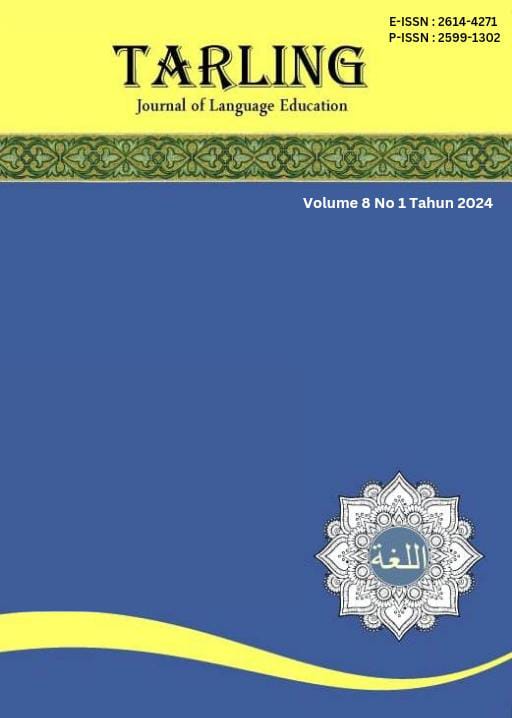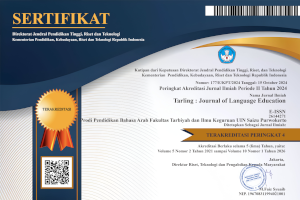An Analysis of English Summative Assessment Item of Merdeka Curriculum Based on Bloom's Taxonomy at SMP N 4 Cilacap
DOI:
https://doi.org/10.24090/tarling.v8i1.10609Keywords:
Bloom’s Taxonomy, summative assessment, Merdeka CurriculumAbstract
This study aims to determine the compatibility of the summative assessment item of the Merdeka Curriculum used at SMP N 4 Cilacap. This research uses a quantitative descriptive method based on Bloom's Taxonomy operational verb tables. There are 47 questions for the midterm assessment and 50 questions for the semester assessment. So, there are 97 English summative assessment items given by the teacher and used to measure students' level of understanding. The summative assessment items studied consisted of the 2022/2023 academic year midterm and semester assessments. The results of this research are that questions in the LOTS category have a higher percentage than the HOTS category. In midterm assessment items, questions in the LOTS category reached 78%. Meanwhile, in semester assessment items, the number of items that have the LOTS category is 66%. So, based on this research, items categorized as LOTS dominate the Summative Assessment items at SMP N 4 Cilacap. So, this research shows that the summative assessment items at SMP N 4 Cilacap are incompatible with the Merdeka Curriculum. Based on these results, it is hoped that the preparation of assessment items in the following year will be further improved so that students can think more critically by the level of thinking in the Merdeka Curriculum.Downloads
Published
2024-06-09
Issue
Section
Articles
License
Copyright (c) 2024 Aulia Salsabila, Irra Wahidiyati

This work is licensed under a Creative Commons Attribution-ShareAlike 4.0 International License.
Authors who publish with this journal agree to the following terms:
- Authors retain copyright and grant the journal right of first publication with the work simultaneously licensed under a Creative Commons Attribution License that allows others to share the work with an acknowledgement of the work's authorship and initial publication in this journal.
- Authors are able to enter into separate, additional contractual arrangements for the non-exclusive distribution of the journal's published version of the work (e.g., post it to an institutional repository or publish it in a book), with an acknowledgement of its initial publication in this journal.
- Authors are permitted and encouraged to post their work online (e.g., in institutional repositories or on their website) prior to and during the submission process, as it can lead to productive exchanges, as well as earlier and greater citation of published work (See The Effect of Open Access).










